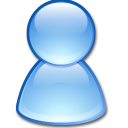bookmarks (hide)4
- The development of science with a rapid increase in the number of scientific researches, scientists and researchers, and the advent of novel scientific disciplines have led to an exponential rise in the number of journals, books, congress proceedings, dissertations, patents, technical reports and other publications bringing research results. These publications are referred to as primary publications or primary sources of information, pointing to the original character of the information presented. Convenient search of such a huge number of publications issued in different countries, in different languages and stored in different media would be impossible without special aids, i.e. secondary publications or secondary information sources, which process, analyze and summarize primary publications and help in their target search. As such a great amount of publications and their authors require proper evaluation, these secondary sources of information are al- so used for scientific validation, based on the high criteria they employ in the selection of primary publications to be systematically followed and processed.
- The aim of this analysis is to evaluate how the citation count varies between Web of Science (WoS), Scopus, and Google Scholar in the current literature
- Google Scholar provides a new method of locating potentially relevant articles on a given subject by identifying subsequent articles that cite a previously published article. An important feature of Google Scholar is that researchers can use it to trace interconnections among authors citing articles on the same topic and to determine the frequency with which others cite a specific article, as it has a "cited by" feature. This study begins with an overview of how to use Google Scholar for citation analysis and identifies advanced search techniques not well documented by Google Scholar. This study also compares the citation counts provided by Web of Science and Google Scholar for articles in the field of "Webometrics." It makes several suggestions for improving Google Scholar. Finally, it concludes that Google Scholar provides a free alternative or complement to other citation indexes.
- Researchers turn to citation tracking to find the most influential articles for a particular topic and to see how often their own published papers are cited. For years researchers looking for this type of information had only one resource to consult: the Web of Science from Thomson Scientific. In 2004 two competitors emerged – Scopus from Elsevier and Google Scholar from Google. The research reported here uses citation analysis in an observational study examining these three databases; comparing citation counts for articles from two disciplines (oncology and condensed matter physics) and two years (1993 and 2003) to test the hypothesis that the different scholarly publication coverage provided by the three search tools will lead to different citation counts from each. Eleven journal titles with varying impact factors were selected from each discipline (oncology and condensed matter physics) using the Journal Citation Reports (JCR). All articles published in the selected titles were retrieved for the years 1993 and 2003, and a stratified random sample of articles was chosen, resulting in four sets of articles. During the week of November 7–12, 2005, the citation counts for each research article were extracted from the three sources. The actual citing references for a subset of the articles published in 2003 were also gathered from each of the three sources. For oncology 1993 Web of Science returned the highest average number of citations, 45.3. Scopus returned the highest average number of citations (8.9) for oncology 2003. Web of Science returned the highest number of citations for condensed matter physics 1993 and 2003 (22.5 and 3.9 respectively). The data showed a significant difference in the mean citation rates between all pairs of resources except between Google Scholar and Scopus for condensed matter physics 2003. For articles published in 2003 Google Scholar returned the largest amount of unique citing material for oncology and Web of Science returned the most for condensed matter physics. This study did not identify any one of these three resources as the answer to all citation tracking needs. Scopus showed strength in providing citing literature for current (2003) oncology articles, while Web of Science produced more citing material for 2003 and 1993 condensed matter physics, and 1993 oncology articles. All three tools returned some unique material. Our data indicate that the question of which tool provides the most complete set of citing literature may depend on the subject and publication year of a given article.
